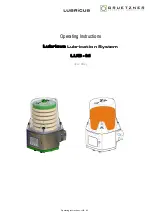
Spatial Reference Manual
Page 94 of 158
Version 4.4
04/06/2019
Function
Type
GPIOs
Auxiliary
RS232
Frequency Input
All
Receive
Frequency Input
All
Frequency Input
All
Digital Input
All
Receive
Digital Input
All
Receive
Serial Transmit
1
Transmit
Serial Transmit
1
Transmit
Serial Transmit
1
Transmit
Serial
All
All
Serial
All
All
Frequency Input
All
Frequency Input
All
Odometer Direction, Forward Low
Digital Input
All
Receive
Odometer Direction, Forward High
Digital Input
All
Receive
Reverse Alignment, Forward Low
Digital Input
All
Receive
Reverse Alignment, Forward High
Digital Input
All
Receive
Digital Input
All
Receive
Table 19: GPIO pin and auxiliary RS232 functions
12.4.1
1PPS Output
In this function, the pin pulses for 50 milliseconds to signal the precise second. The
1PPS line starts pulsing approximately 100 milliseconds after power up and always
fires irrespective of whether Spatial has accurate time or not. It is important to note
that when Spatial acquires time corrections from its GNSS receiver, the 1PPS signal
may fire at an interval of less than 1 second. This typically only occurs the first time
the GNSS receiver obtains a fix after startup. The time initialised status flag can be
used to determine whether the time and 1PPS line is accurate or not.
1PPS Source
Voltage Level
Trigger
Auxiliary
-5v to 5v
Falling Edge
GPIO
0 to 5v
Rising Edge
Table 20: 1PPS Specifications
12.4.2
GNSS Fix Output
In this function, the pin is low when there is no GNSS fix or a 2D fix and high when
there is a 3D, SBAS, Differential or RTK GNSS fix.
















































